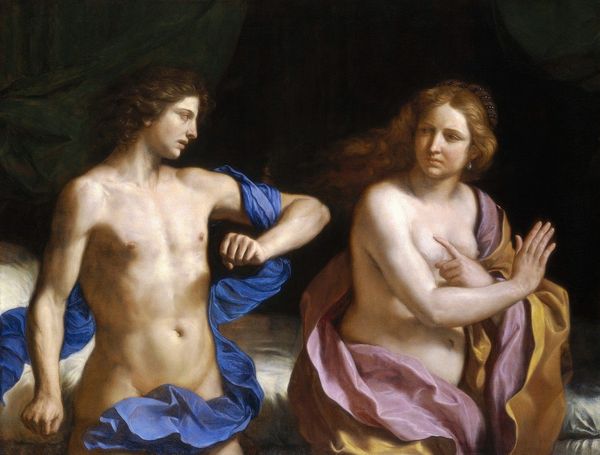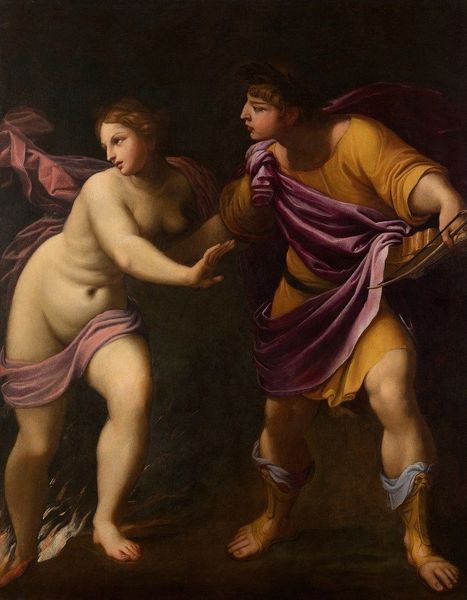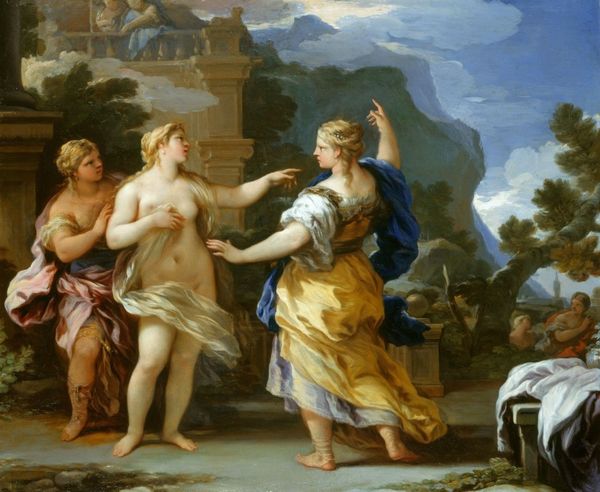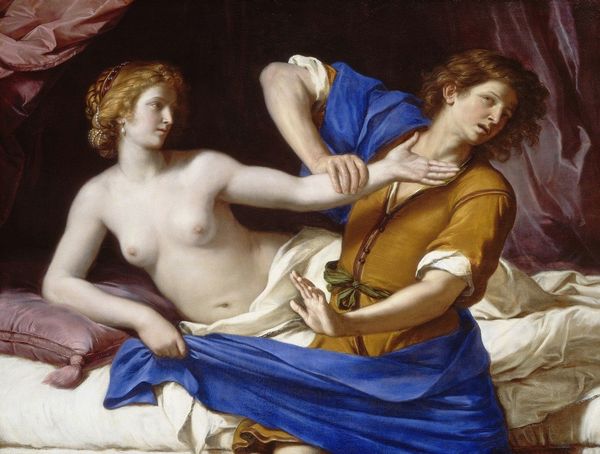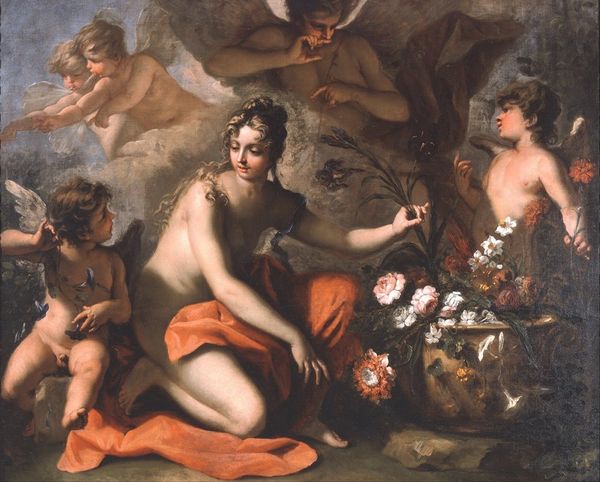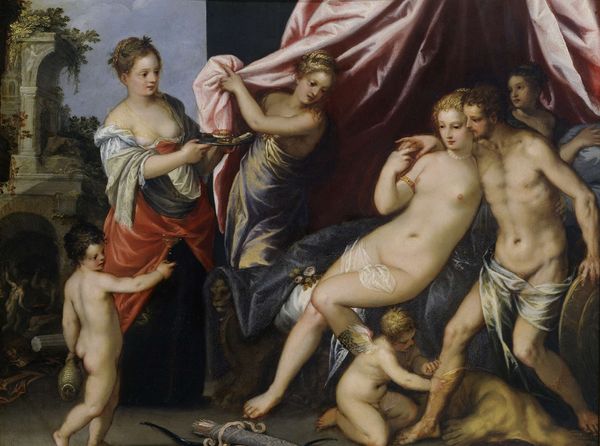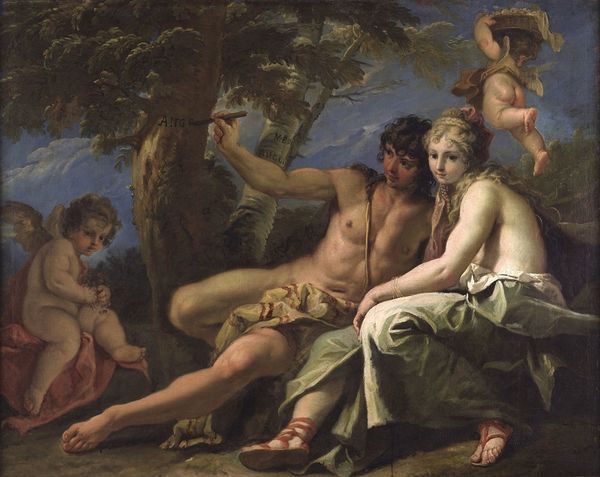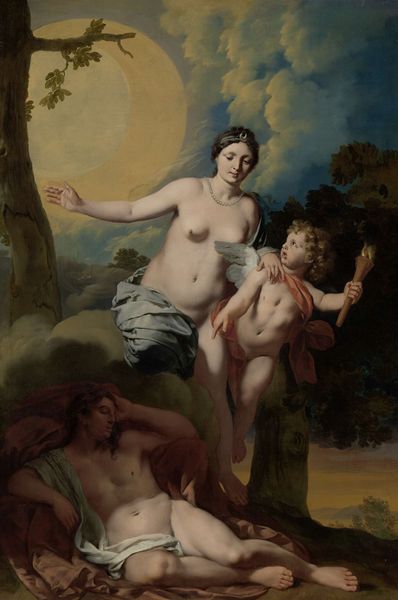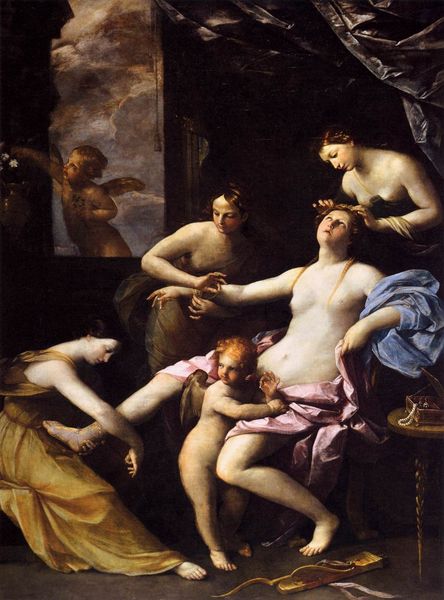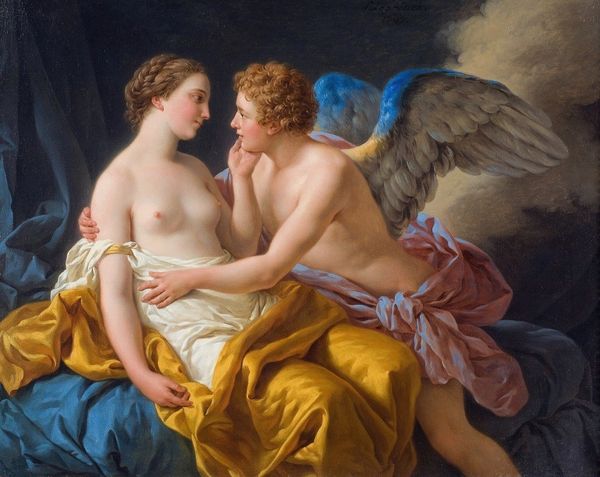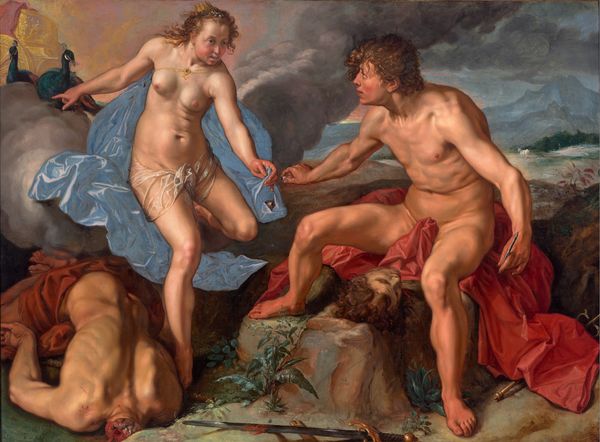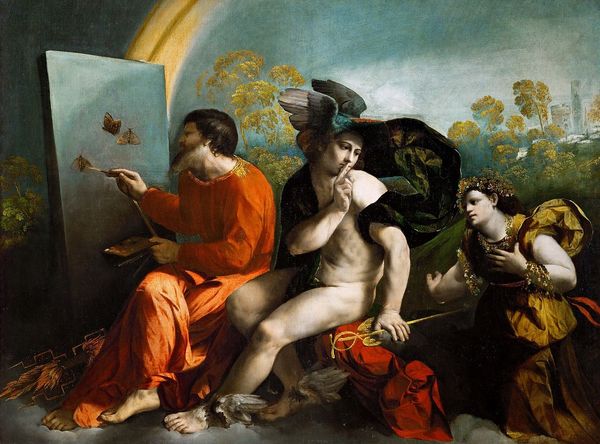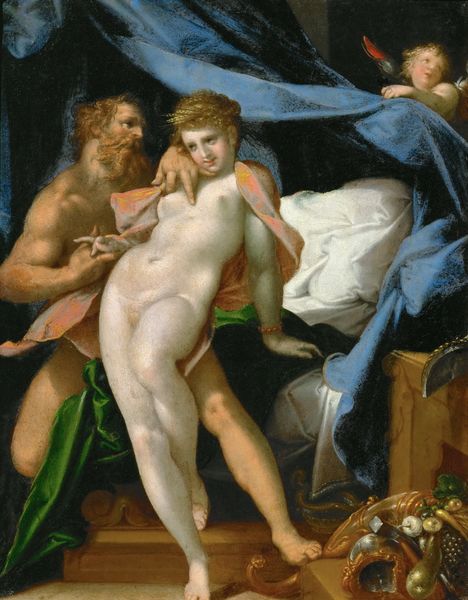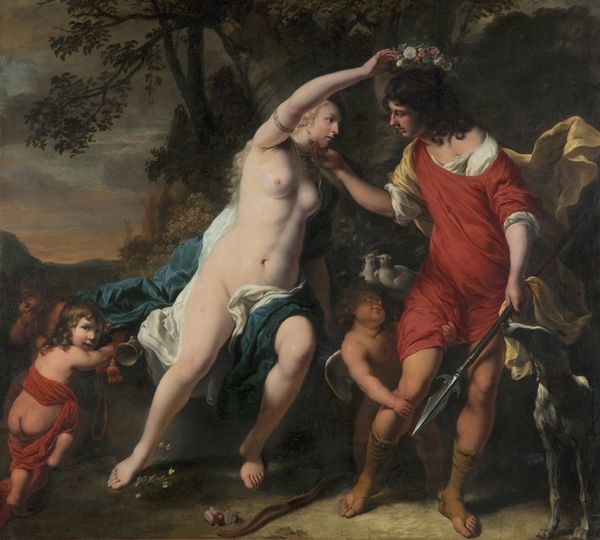
painting
#
allegory
#
painting
#
figuration
#
mythology
#
history-painting
#
nude
#
rococo
Copyright: Public Domain: Artvee
Curator: Looking at Louis-Jean-François Lagrenée’s *Mercury, Herse and Aglaura* from 1767, my immediate reaction is that there’s something voyeuristic happening. There’s definitely a hidden agenda suggested here in this canvas. Editor: Indeed. Lagrenée presents a narrative steeped in Greek mythology. This piece illustrates a scene from Ovid’s *Metamorphoses*, where Mercury, identified by his winged helmet, encounters the sisters Herse and Aglaura. His mission? To seduce Herse. Curator: The composition is cleverly staged. Herse reclines alluringly, seemingly the focus. But then, there’s Aglaura lurking in the shadows, watching intently. The artist is highlighting, for me, an interplay of desire and the act of observing, creating an almost theatrical scene. It reads like a cautionary tale about unchecked desire and jealousy. Editor: And how these mythic images get repackaged in eighteenth century European sensibilities! This Rococo piece, for instance, presents the complexities of morality and power in ways that echo courtly dramas. Mercury, as a god, is exercising his privilege. Aglaura's envy reveals the limited agency afforded to women in this social hierarchy, as both subjects in the myth and within the context of the artist's time. Her role, though seemingly secondary, becomes pivotal in examining these dynamics. Curator: Certainly the work displays a kind of visual symbolism typical of the time, with each character representing a moral concept. Aglaura symbolizes envy. Mercury embodies the messenger of desire, perhaps, and Herse, the object of it all. This interplay transforms a simple mythological story into a broader comment on the values and pitfalls of human behavior. The choice to paint it during the Age of Enlightenment speaks to the ongoing project of humanity contemplating its imperfections through classical tales. Editor: The nuances are subtle, yet poignant, and even somewhat challenging to decipher through modern readings of identity and the male gaze. How can the artist’s intentions be untangled, or does it even matter, considering the rich interpretive ground that remains? Curator: Exactly. I think art history shows how artists continue to engage and make us aware of these complexities in myth and human existence itself. Editor: Precisely. These are images that hold a deep relevance when considered under present lights.
Comments
No comments
Be the first to comment and join the conversation on the ultimate creative platform.
